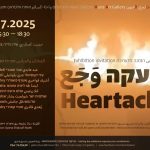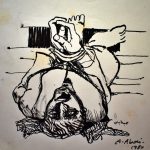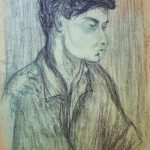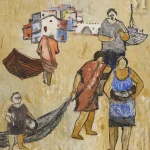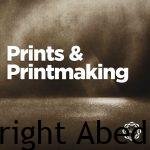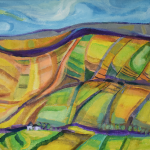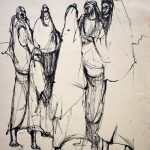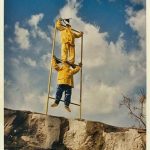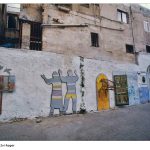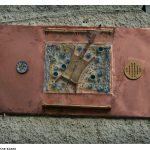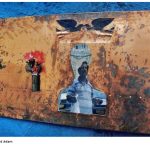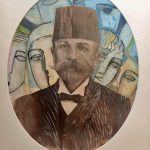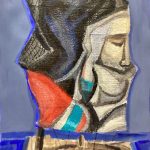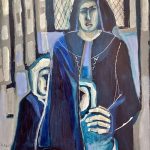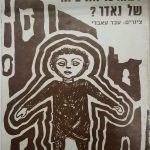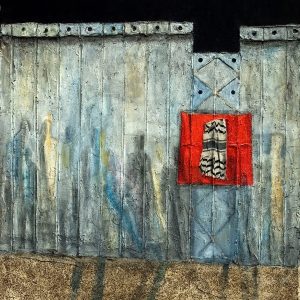
A few years ago I first met Abdi Abdi, I got to know his works and I stood up for their development. A short time later, when I was still feeling the features of his art, I received the honor of opening his solo exhibition at Haifa Artists’ House. The feelings and ideas expressed on that occasion have not changed since then. I would like to reiterate my conclusion with some expansion and addition, this time in Arabic, with the help of my friend and colleague, Mr. Tariq Abu Rajab, whom you would like to translate
Visiting the artist’s workshop gives the contemplator an additional dimension to his visit to the museum or exhibition. The workshop reveals a narrow and intimate circle in the artist’s wide environment that reveals some of the stages of artistic work and its sources of inspiration. I used to say to anyone who makes the trip to Paris if he has the time, even half a day, to abandon all its famous features and to limp at the home of the sculptor Auguste Rodin, who today is exposed to many of his works in the natural environment in which she was born. Since then I have visited many artists’ homes in France, but in Haifa there is nothing that I like to my heart from Abdel Abedi’s workshop. It is hard to think of Abdi and his art apart from the image of the place where he creates, this place that tells the story of Haifa and its Palestinian population.
On the slope of the street that connects the town to Mount Carmel – hence the name: Jabal Street – there is a picturesque square. Anyone who enters it will be returning to Haifa at the turn of the century. A small garden with lemon trees, lasagna, and cactus shrubs. Where a number of works of art are scattered, as if they too had sprouted from the earth. On one side of the square is a modest room where Abdi Abadi, engrossed in his artistic work, is breathing smoke and showing a cup of Earl Gray tea with a small saucepan of rosa. A situation in a very natural and harmonious even to think that Abdi Abdi was born and grew up in this place he and his father and mother and grandparents. But no, Abdul was born on Stenton Street, a fifteen-minute walk east of this square, above the church district, which has almost completely disappeared from view in recent years after being surrounded by concrete monsters and stones for government buildings.
But his way from Stenton Street to the studio on the mountain road was long, twisted and arduous, beginning in the year of the Nakba by forced eviction from home, from the city, from home. Five years old, his mother, his brother and his sisters were dragged from Haifa to Acre, from Acre to the Mei Alma camp and from there to Damascus, to a shelter in an abandoned mosque inhabited by a few Palestinian families. In the homes of these exiles, in fear of death, shame, exhaustion, and lost dignity, the child Abduljabbath, who emptied it in front of our eyes, years later, worked with painting, planning, painting and sculpture. The themes and materials of his creativity are rooted in those days: in the scenes of large stalls in refugee camps, in which the burlap bags formed the walls of the “family house”. In the memories of the densely-woven windows of the windows, from which the child looked from his temporary shelter in the Damascene mosque to the street, or the view of the belly of the full-grown women in the Damascus bathroom he visited with his mother. From this experience of asylum, Abdul Abedi was born the artist, “painter of the domed domes” as described by the poet Moshe Barzilai.
Abd al-Abedi ended his three years of uprooting and displacement, reuniting the family and returning to their hometown in Haifa. In Haifa, she is a student of distinguished artists, including renowned Zvi Meirovitz. From there he went to Dresden, Germany, to study at the Academy of Arts. Thus, he became a partner in the great project of the Israeli Communist Party, which helped the young people to receive their rehabilitation in Eastern Europe and established the foundations of a class of free professions and Palestinian intellectuals and writers in Israel who have made outstanding contributions in various fields. In Dresden, the city that symbolized the devastation of Europe during the cycle of insanity and hatred, Abdi was educated by a Jewish artist who survived the disaster, Leyne Grundj, in a non-nationalist, international atmosphere. All of these factors contributed to the formation of the personality of the mature artist.
Abdi’s works express a suppressed pain and a hot longing, in a symbolic language. Is there something more nostalgic than a single slab standing in the center of one of his works of art, which reminds many of us of the homes of their fathers or the homes of their grandparents and grandmothers, and here in the work of the artist is a source of aesthetic experience, and tranquility and tranquility. Only the fact that it is a slab taken from an abandoned house in the Valley of the Cross makes it a monument to a society that existed and disappeared. Is there anything more romantic, at first sight, than the windows of a dark grid in old houses? The artist invites us in each of his works to gaze into the interior and to recall in our imagination views, sounds and smells. However, the secret of these houses is not a beautiful secret because many of the inhabitants of these Albio Have abandoned it, and the fate of those who still exist is unknown.
I am summoning this ability to collect and bury debris, and to protest silently without losing hope. Abdi sees himself as a “Palestinian and an integral part of the Middle East and the Arab world.” He says: “My personal experiences are cultural experiences of the Middle East and the Islamic world at the same time.
Fortunately, I say this as an Israeli Jew, that Abdi is an Israeli and that despite his pain and frustration as a son of the Palestinian people, he has not been desirous of looking for ways of reaching out to Jewish art lovers and addressing them in the language of art. Of their neighbors.
The general aspect of Abdul Abedi’s creativity is not only that. His years of work as a painter of the newspaper of the Union, his extensive educational activity at the Arab Teachers’ House, the arts workshops of the Wadi Nisnas children, the memorials he designed in Sakhnin (with the participation of artist Gershon Kinsfeld), Kaframanda and Kfarkna commemorating the Palestinians who fell from the 1936 revolution to the tragic events In the Galilee in 2000. And finally his activities within the framework of the Association of Fine Arts, which he has recently established, he conducts large educational activities within the workshops for young and old.
In all this – in the rich creativity, in the artistic work for the community and the upbringing of the younger generation, there is, on the one hand, personal and artistic steadfastness, as a repetition of the phrase “Staying in Haifa”; on the other hand there is an expression of faith in hope for a better life. This miserable country, a life of equality, respect for rights, recognition of the value of others, their culture and their suffering.
Abed’s work for me is not just a source of pleasure and spiritual integrity, as I am
It is also a source of solace in a period of painful personal confusion, about the high cost of my people’s independence, which is still borne by my fellow Palestinians every day.
In conclusion, with the opening of this exhibition, which is the harvest of forty-five years of creativity and educational work, I wish Abdel Abedi long and benign years that will continue to give our lives, Arabs and Jews, meaning and hope.
Prof. Avner Ghalaadi

